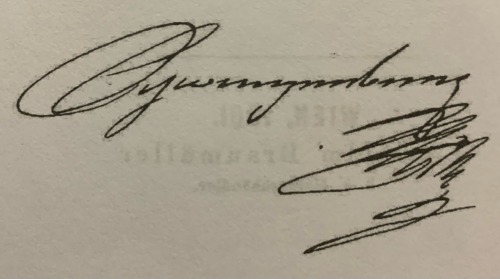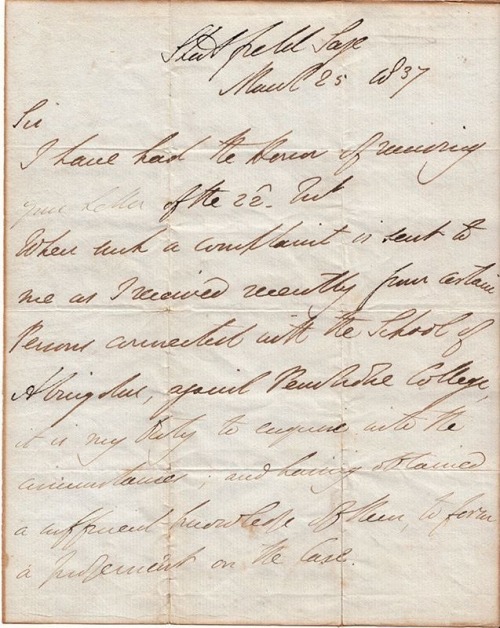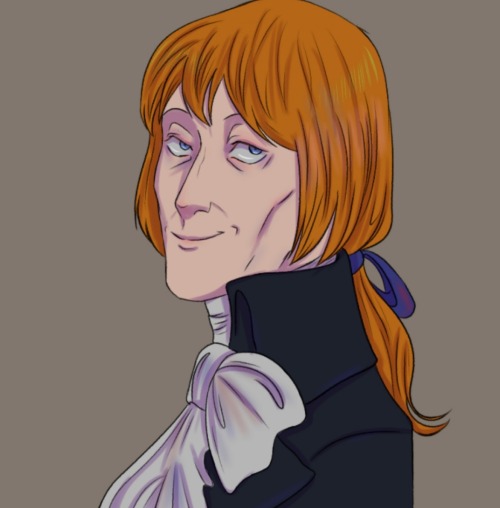
Nothing special, just history, drawings of historical figures in some… er… non-canonical relationships and fun! 🥂25 year old RussianHe/him
258 posts
How To Capture An Austrian Major General
How to capture an Austrian Major General
Heinrich Zschokke, educator and writer, was a native of Magdeburg, Prussia, but moved to Switzerland, where he became a citizen and joined the pro-French faction. He accompanied General Loison on part of the 1799 campaign (and was no great fan of his either, though he concedes he was educated and “not without benevolence”, but unfortunately “completely savaged by war”). This anecdote, however, is not about Loison at all, but about the capture of a high Austrian officer. There is an English edition of Zschokke’s autobiography here; I have translated the passage from the German version.
A few weeks later [according to a footnote: 29 July (1799)], the Austrian Major General Bey tried to advance over the mountains from Uri to Unterwalden. It was a rainy day. The enemy was repulsed in the Seelisberg Alps, with the loss of 800 prisoners. Among the prisoners was Count Bey himself. An aide-de-camp of General Loison, Captain Badin, led the engagement against him. Loison meanwhile played trictrac with me at Stans until he had news of the victory. Then he mounted a horse and hurried after his troops.
During his absence, French officers led to me a man who, with an old peasant’s hat on his head, wearing an Austrian uniform, covered with dirt from top to bottom, freezing and cold from the rain, was shivering in all his limbs. It was Major General Bey. After I had provided him as well as possible with linen, clothes and refreshments from my own wardrobe, he told me in what a curious, almost ridiculous way he had fallen into captivity. In order to better survey the movements of the troops, he had climbed a hill; but at the top, on wet, slippery ground, losing his balance, he had fallen; from the other side of the hill he had rolled down until he lay at the feet of a French drummer and a soldier who were engaged in idle conversation. They had pulled him up politely, taken his sword and money from him in the most obliging manner, but not the watch he had offered, and then handed him over to Captain Badin. Such is the fortune of war. Loison reaped the glory of the day playing trictrac; Capitaine Badin remained Capitaine Badin.
»Ah, mon général, what a terrible fall! Here, take my hand, let me help you up. Pleased to meet you. Are you sure you’re not hurt? Let me just take that sword from you … oh, and that wallet, it looks awfully heavy, you really shouldn’t carry around too much weight in your weakened condition … the watch? Oh, no, thanks, please keep it, I already have five of those.«
Napoleonic soldiers, the cutest jerks of European warfare.
-
 chevi46772 liked this · 1 year ago
chevi46772 liked this · 1 year ago -
 gokusreallover liked this · 2 years ago
gokusreallover liked this · 2 years ago -
 blackwidowmarshal123 liked this · 3 years ago
blackwidowmarshal123 liked this · 3 years ago -
 count-lero reblogged this · 3 years ago
count-lero reblogged this · 3 years ago -
 count-lero liked this · 3 years ago
count-lero liked this · 3 years ago -
 isa-ko liked this · 3 years ago
isa-ko liked this · 3 years ago -
 tairin liked this · 3 years ago
tairin liked this · 3 years ago -
 sollannaart liked this · 3 years ago
sollannaart liked this · 3 years ago
More Posts from Count-lero
I’m actually reading the Russian translation of the countess’ memoires right now and it’s so much fun! She was such an amazing woman with a bunch of wonderful stories about all the Napoleonic historical characters from each and every nation in her stock.
It almost seems as a miracle - the existence of such knowledgeable people. The aristocrats of those times were truly the people of the world. 😌🇵🇱


(Ingres, Caroline Murat, 1814) ~
Countess Anna Potocka, the same lady who one day in the summer heat had been dragged by the Davouts through their garden wilderness in order to feed some d…ed partridges, a decade after Napoleon’s fall made a trip to Italy. In a much more civilised manner, I presume. Among other towns, she also visited Triest. (Taken from a publication called »Voyage d’Italie«)
Trieste can only be of interest to those who, like us, have seen some personality there, for the city does not offer much attraction. We met Caroline, one of Napoleon’s sisters.
In 1826 she lived in a pretty country house close to the town. This charming villa was called Campo Mars; the queen had bought it from a merchant in Trieste and had arranged it with infinite taste. The care and activity she put into managing the work on this little property seemed to have made her forget that she had once possessed the most beautiful of kingdoms. An alley planted with vines - in the Italian style - led to a small arbour overlooking the sea and the busy road; this is where we spent the evening hours, so beautiful under the Italian sky; it was there that I heard the anecdotes I am going to tell.
The house, of impeccable architecture, contained, apart from the elegant flat of the queen, a large salon devoted to souvenirs. A magnificent portrait of Murat on horseback was the principal ornament; Caroline never presented this salon, where the portraits of the whole family, marble busts or paintings, were gathered. The general (Macdonald) alone did the honours.
[…]
I had seen the Queen of Naples in Paris at the time of Napoleon’s marriage to Marie-Louise; she had given me the impression of a pretty woman on the throne. I found her with a figure that was still pleasant, as it had been in the past. One could feel that she needed to make herself loved by all those who came near her. The throne had disappeared, but the charm had remained, contrasting in a piquant way with an uncommon strength of soul, a serious spirit, a kindness, an equality of mood, which such great misfortunes had not been able to embitter or even disturb.
The countess also muses a bit about the relationship between Caroline and general Macdonald (Are they a couple now? Had they been? - Not that it’s important, really, but …), admires how perfectly Caroline imitated Marie-Louise’s Austrian accent and in passing relates some childhood anecdotes of Napoleon – which are doubtful mostly because by the time Caroline was born Napoleon and Joseph were already living in France. So how would Caroline be able to tell?
She later in her journey visits Naples and is astonished about Caroline’s rooms in the palace of Portici:
On visiting this royal residence, I expected to find there the rare combination in Italy of magnificence and taste. It seemed to me that Queen Murat, accustomed to the splendour of the Tuileries, would have been able to reproduce the palace of Armide, of which, better than any other, she was worthy of being the deity.
Caroline’s appartment, still intact, did not meet my expectations. It was that of a duchess of the Faubourg Saint-Germain. Apart from a few mosaic parquet floors, there were no riches other than Lyon fabrics. A few genre paintings by the French School, a lot of Sèvres porcelain, and a number of bronzes of rather poor taste were the main ornament of this residence.
Madame la contesse is hard to please, as usual. At least she didn’t have to feed any birds this time around.
The book also contains three letters by Caroline to countess Potocka, mostly related to the marriage of countess Potocka’s daughter.

Josephine and Fouche as besties — my meaning of the life

Haven’t made full-fledged informative posts for a while but definitely want to continue sharing all the curious things I’m able to find through my endless researches on the Napoleonic era.
For example, I’m a big fan of finding out how exactly the handwritings of certain historical characters looked like. Recently I was able to discover a copy of marshal Blücher’s letter to Metternich which was written by him after the battle of Waterloo and now want to make a short compilation due to the occasion. :)
So, let’s start - as usual - with two historical characters I’m currently obsessed with: Schwarzenberg and Metternich! 🇦🇹
Here come the samples:


The first letter written by Schwarzenberg dates back to the summer of 1812. It is conducted in French (first part of it, actually, the second one is in German) and is directly connected with the participation of an Austrian auxiliary corps commanded by prince Karl himself during Napoleon’s campaign in Russia. This letter is one of many - m a n y - letters which Schwarzenberg sent his wife, Marie Anne (“Marianna” for all her loved ones as it was with Metternich’s wife - everybody in Vienna called Eleonora von Kaunitz-Rietberg “Laura” or “Laurel”) von Hohenfeld, practically anytime they were apart. You can actually see his usual tender address to her at the beginning of the ninth line - “ma Nany”. ❤️
As for Metternich’s handwriting, it comes from a single fragment of a letter (or some memoir, perhaps) written in German. It’s a pity that on a site of the auction there was only this small part… However, we can at least admire Metternich’s signature in all it’s flamboyant glory!
Klemens loved to strike directly at people’s hearts and his signature represents it in full measure, for sure. ✨
I’m also such a big fan of the way how the letter “z” looked in a handwritten form of German language, it’s just ah! Magnificent! Besides, it closely resembles the handwritten form of the same letter in Russian - “з” - that I find fascinating. :)
(Moreover, if you are suddenly curious about Schwarzenberg’s signature, I can provide!
You are welcome~)

Now we can talk about the main piece of cake - Blücher‘s letter written in German! No doubt, there was a lot to describe after such a hard-fought battle. 😅
You can examine marshal’s signature as well. I’ll leave all the judgements to you, my dear readers!


And the man who closes the selection for today is the victor at Waterloo himself - here’s a later sample of Arthur Wellesley’s handwriting which will serve us as a cherry on top of the Austro-Prussian cake. 🇬🇧

Thank you for your attention as always! 💗


One day I will decide on the design of his hairstyle. But not today.
I swear to you, my dear followers and all the Napoleonic history lovers: I’m capable of drawing not only Austrians and I have a proof! A very hooligan one but still. X)
Here it is! Ahem. 👑

So, who do we have here? Oh, gosh, what an honour! Their Majesties, the king of Sweden and the King of Naples, are certainly sharing the same train of thought which considers the preservation of their crown in the years 1813-1814… 🤭
What can I say about the whole affair? Well, no shame, for sure, only bright royal future in a foresight!
Love these two gascon bastards despite any mischievous combinations they had to perform during their turbulent lives. If only both succeeded in their claims… That could have been the strangest and the perkiest pair of monarchs in all the post-Napoleonic wars Europe!